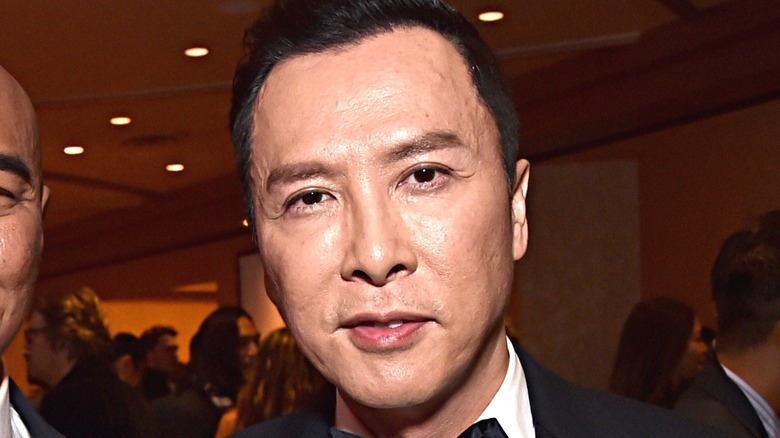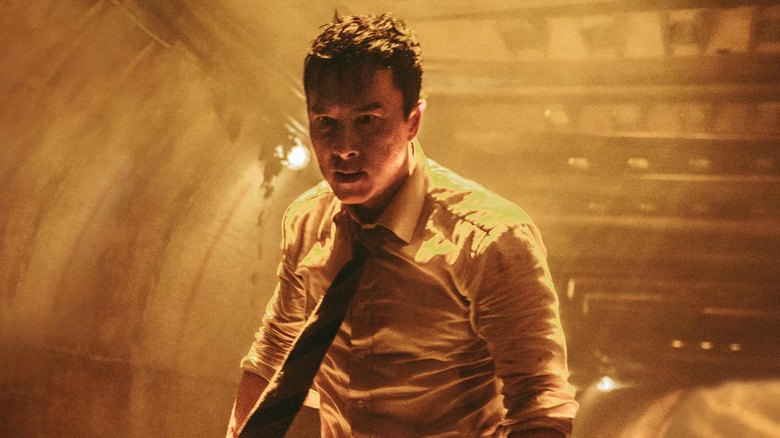Donnie Yen Breaks Down The Differences Between Hong Kong And American Action Movies - Exclusive
Fight scenes in modern Hollywood are a contentious topic. Studios are investing more time and money than ever into death-defying stunts and one-on-one action, but the actual narrative impact of those scenes is often debatable. Reddit's popular Movies community and there's bound to be some debate about fight scenes — often that they're too short, have too many cuts, or they're too hard to follow. Many don't even have a narrative, they're just excuses for the beefy musclemen to do beefy musclemen things without ever taking much damage.
Looper recently spoke with an expert on fight scenes: martial arts motion picture star Donnie Yen. He's currently promoting his movie "Raging Fire," which features many excellent fight scenes. They're easy to follow, exciting, and tell great stories in and of themselves. When asked about the MMA/wrestling feel of the final fight, Yen provided a detailed, passionate breakdown of why Hong Kong action movies are often so much better than American ones.
It's all about who shoots and edits
In the days since Bruce Lee movies were being made, "we changed, we revolutionized the way we shoot action. We actually allow the fight choreographer to shoot and edit," Donnie Yen said. Historically, action movies are big box office draws, which gives a lot of influence to those who made them. "So the action directors, our older generation had a lot of power, a lot of say. When the action director comes on a set, he takes over the set. He starts shooting the establishing shots and putting all the pieces together. That's why for decades, Hong Kong films were above everybody else, because they were actually shooting the essence of the fight choreography."
Yen acknowledged that complaints about American action films having fighting scenes with "choppy" editing. He suspects that "probably perhaps some decent or even brilliant choreography got into the hands of someone who doesn't know how to shoot it. And he said, 'Oh, let me try here. Let me try here.' And they start shooting multiple cameras, multiple shots, and then these shots were delivered to the editing room. And the editor is like, 'Oh, let me figure this out,' and starts chopping it up. So at the end of the day, you see this choppy thing."
The world is changing
Donnie Yen also acknowledged that things are changing and has high praise for "John Wick 4" director Chad Stahelski: "he understands, he came from that culture. He was a stunt man, he worked with ... a lot of these Chinese action filmmakers. And he's a good martial artist himself, he's a well-trained martial artist for the longest time." He added that Stahelski knew "what was missing in these American action films when it comes down to the fights is you're not shooting it right, you're not editing it right."
Meanwhile, Yen also recognized two decades ago that Hong Kong action movies — despite their advanced technique — weren't quite breaking through. This was in part because they weren't quite catching up with which fight sports were popular outside showbusiness. "Perhaps I was very fortunate," he says." I spent many years traveling around. I lived in the States for a long time, and then I was traveling around, and I've always been a big fan of martial arts, and I was always curious as a kid. So I had the privilege of learning so many martial arts styles, and I understood, oh, well, how do you elevate Hong Kong movies?"
Yen called "Kill Zone" his "first temptation," in which he tested out UFC-style fights. He introduced jiu-jitsu by way of "Flash Point," and both of those movies are now used as blueprints for action flicks around the world. "'Raging Fire' is an elevation of what I wanted to do with these kind of modern films. If we are making modern films today, modern action films like cop, or combat, or contemporary, any kind of contemporary setting that is happening today, it has to be what's happening today."
"Raging Fire" is in theaters now and debuts on the martial arts streaming service Hi-YAH! October 22.


